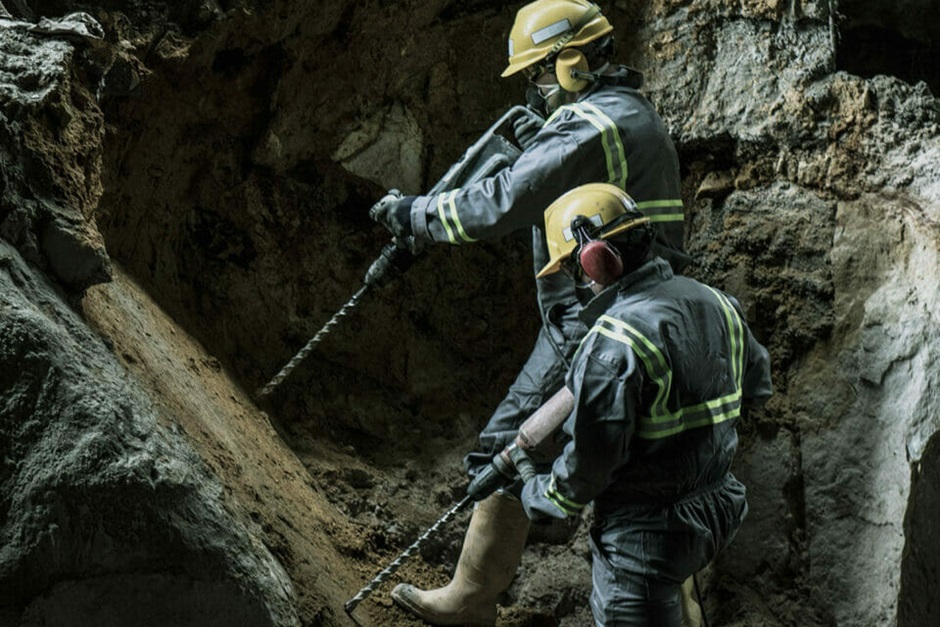The mining industry requires a keen focus on safety to ensure the well-being of workers. With the combination of heavy machinery, challenging environmental conditions, and the potential for hazardous substances, it’s crucial for everyone involved to adhere to stringent safety protocols. Here’s an overview of the essential safety measures in mining, particularly for those new to the industry.
Understanding the Risks
Mining operations present a range of potential hazards. These include physical risks from machinery, geological risks such as cave-ins, and chemical risks from exposure to harmful substances.
Understanding these risks is the first step in mitigating them. It’s important for new miners to familiarise themselves with the specific dangers associated with their work environment and the measures in place to protect against them.
Personal Protective Equipment
Personal Protective Equipment (PPE) is the frontline defence against many of the hazards present in mining. This includes helmets, gloves, eye protection, high-visibility clothing, and respiratory equipment.
Each piece of PPE is designed to protect against specific risks, and proper usage is non-negotiable. New miners should be trained on how to correctly wear and maintain their PPE to ensure maximum protection.
Training and Education
Proper training and ongoing education are crucial for maintaining safety in mining operations. New employees should undergo comprehensive induction programs that cover all aspects of mine safety. This training should include both theoretical knowledge and practical skills such as operating machinery and using underground mining safety equipment.
Understanding emergency procedures and recognising potential hazards are also vital parts of training and education. Continuous education and refresher courses on these topics will help keep all miners up-to-date with the latest safety practices.
Environmental Awareness
Miners must develop a thorough understanding of the mine’s layout. If you’re a miner, you should familiarise yourself with the locations of safety equipment, first aid stations, and emergency exits in your workplace.
Regular training sessions should focus on teaching miners to constantly assess their surroundings, looking for signs of potential danger such as loose rocks, equipment malfunctions, or gas leaks. By maintaining this high level of environmental awareness, miners can prevent accidents and respond swiftly in the event of a health emergency.
Communication
Effective communication is a cornerstone of mine safety. Clear and consistent communication ensures that everyone is aware of their roles, the location of hazards, and the procedures for responding to incidents.
Modern mining operations utilise various communication tools, from radios to visual signals, to maintain constant contact among workers. It’s vital for new miners to be proficient in using these tools and to understand the importance of reporting any safety concerns immediately.
Emergency Procedures
Despite the best safety measures, emergencies can still occur. Knowing how to respond swiftly and effectively can make a significant difference in the outcome of an incident.
All miners should be thoroughly trained in emergency procedures, including evacuation routes, the use of safety equipment, and first aid. Regular drills help ensure that all workers are prepared to act quickly and effectively whenever necessary.
Mental and Physical Health
Mining is physically and mentally demanding. Maintaining good health is essential for everyone’s safety. Workers should be encouraged to take regular breaks, stay hydrated, and seek medical attention when needed.
Mental health is equally important; the stresses of mining can lead to fatigue and decreased awareness, increasing the risk of accidents. Providing support for mental health and encouraging workers to speak openly about their challenges can help mitigate these risks.
Technological Advances
The mining industry is continually evolving, with technological advancements playing a significant role in enhancing safety. Automation, remote-controlled machinery, and advanced monitoring systems can reduce the exposure of workers to hazardous conditions.
Companies should embrace these technologies and stay informed about how they can contribute to a safer working environment. They should also provide training and ensure all workers can use the modern equipment.
Legal and Regulatory Compliance
Adhering to legal and regulatory standards is not just a requirement but a fundamental aspect of mine safety. These regulations are designed to protect workers and ensure safe operations.
Both companies and workers should be educated about the relevant laws and standards that apply to their work and understand the importance of compliance. Regular audits and inspections help ensure that these standards are consistently met.
Conclusion
Safety in mining is a complex but critical aspect of the industry. With proper approach and by prioritising these safety elements, new miners can contribute to a safer and more productive mining operation.

